Men Want to Play Cowboys (Again)
Do they have what it takes?
Why are cowboys suddenly on every rich man’s moodboard? In the past year alone, we’ve seen Haider Ackermann’s sexy, modern take on gorpy Utah desert at Canada Goose, Satisfy’s ranch campaign shot in Wyoming, and perhaps most unexpectedly, Post Malone’s fashion show that brought a horse and Bud Light bottles out to Paris. If you were to open GQ right now, you’d spot at least a couple of bolo ties, heeled boots, and denim shirts thrown into the mix as a way to add texture to otherwise manicured and PR-trained male celebrities. And that doesn’t include someone, like Glen Powell and Austin Butler, who have embraced elements of cowboy attire in their daily wardrobes.

Western wear is a natural successor to the workwear archetypes that have dominated menswear for the past couple of decades, theorizes fashion and culture writer William Goodman. “In the 2010s we had the lumbersexual — a lot of flannel, a lot of hard denim, selvedge denim,” he explains. “After that, we moved really heavily into workwear — your Carhartt stuff, even French workwear jackets, and a beloved shortcoat.” In hindsight, it was only a matter of time before the industry landed on the cowboy as the next historical silhouette to pull from, he concludes, pointing to the rise of independent western brands, like Wythe, and their collaborations with Throwing Fits (2022) and 3sixteen (2023) as early signs of it.
When classic cowboy attire barged back into the mainstream, it spawned a range of interpretations, including those from luxury and semi-luxury fashion brands. Pharrell dove head first into classic Americana and turned Louis Vuitton’s AW24 runway into a Western extravaganza: bootcut jeans, tortoise detailing, and logo belt buckles — so incredibly rich and indulgent that it’s almost intimidating. Ackermann went the mischievous route with tech microshorts styled with Stetson hats and over-the-knee rubber boots. Plucked out of a scenic editorial onto the Canada Goose website, the pieces still make up a compelling outdoor collection that carries a scent of freedom and adventure. And most recently, Dario Vitale layered Western silhouettes over classic 80s styles and colors in a widely discussed Versace debut that reads both modern and nostalgic.
In the context of each brand’s archive, some of these luxury plays on Western are more surprising and imaginative than others, but overall, it’s hardly the first time cowboy gear has been positioned as luxury. Pageantry is part of western DNA, explains Spencer Phipps, the founder and creative director of a namesake fashion brand Phipps. “One of the big misconceptions about Western wear is that it’s cheap, blue-collar, purely utilitarian… [But] there’s always been this luxury side to it — Nudie Cohn’s rhinestone suits, custom boots, silver belt buckles and jewelry — Western wear has long been a way to show status. In a place like Dallas or Nashville, for example, it isn’t just functional, it’s high glamour,” he tells me. “So when people say [Western] is suddenly “luxury,” I don’t totally buy it. It’s always had that streak. What’s happening now is that big European houses are leaning into it more heavily for a certain authenticity and freedom that it represents.”
Phipps’ own take on Western is a lot more muted and approachable, which, ironically, makes it that much more desirable and aspirational. Outside of the industry cycles, the revival of Western style harkens back to the romanticized figure of the cowboy as a spiritual predecessor of Marvel superheroes and a classic childhood icon in line with astronauts and firefighters, argues Goodman. Funny enough, stepping into such a loaded historical archetype feels more natural even to those who feel intimidated by contemporary styles, like skater wear, given how easily its silhouettes can be folded into their exiting wardrobes. “If you have a pair of denim and you throw on cowboy boots, you are basically three quarters of the way [there],” Goodman says jokingly. You don’t have to grow up scrubbing barns and riding horses in Wyoming to pull off a pair of jeans the same way you might be expected to name three songs to rep a band tee or do a kick flip at a Vans register.
“The cowboy is just as much fantasy as a couture gown or a hardcore alpinist parka, but it’s one people can actually wear every day,” echoes Phipps. Since 2018, his brand has gone through a number of phases, both visually and conceptually: AW18 had a heavy focus on quality and durability, SS20 referenced the Frontier thesis and tapped into the spiritual side of geology with crystal prints and accessories, and AW23, which officially marked the brand’s earlier move from Paris to California, leaned into the cinematic world of western with a runway presentation hosted at the Big Sky Movie Ranch in Simi Valley. In the end, Phipps decided, dressing modern cowboys is “less about chasing concepts and more about getting the details right and making real pieces people actually want to wear.”
What stayed consistent throughout the years is the designer’s intent to “build a world that feels coherent and personal” which you can tell by the character that peeks through every part of the brand — from silhouettes that look both classic and contemporary to casting that favors real guys from tool sheds and gas stations over professional models. “The visuals might shift, but the goal has always been the same: making solid, elevated product with storytelling baked into it,” says the designer. “And if we do our job right, the guys who put them on should feel like they’re stepping into their own myth [rather than putting on a costume].”
As Western regains its appeal across all spheres of contemporary culture — sports, music, film, and fashion — this kind of attention to detail and commitment to capturing its underlining ideas are shaping up to be the moat between the rich and real interpretations of the genre and their commercial counterparts. Eager to play with cowboy theatrics, few are skilled and patient enough to dig deep into their complex character, especially since selling a pop version of it is so financially lucrative. Although — there is much more on the horizon, predicts Goodman. “It’s only going to get weirder before [the Western cycle dwindles], and I am curious to see the big swings, one way or another, that happen as we shift through the rest of this moment,” he says. “In a couple of years, are we doing to be able to walk into a Zara and get a fringe leather jacket or riding chaps?” Only time will tell who is a real cowboy and who is in it for the gold rush.
IN THE MARGINS
Perhaps the most fascinating manifestation of the resurgence of Western outside of fashion is the rapid ascend of Professional Bull Riding into the mainstream. Rodeo as a sport rather than a regional tradition has been on my mind since Bella Hadid swapped her English saddle for a Western and started dating a professional cowboy. In the research process for this piece, I came across Grayson Scott’s brilliant investigation into PBR’s success for The Baffler. It turns out, historically, bull riding was one of the many events in a rodeo but having realized that they were drawing most of the crowd without proportional allocation of the prize money, twenty bull riders bet on it to become a stand-alone discipline. On paper, it paid off big time — today, PBR events sell out arenas all over the county and attract millions in media deals and sponsorships. But there are all these weird bumps and bruises that Scott uncovers as he strips back the mechanics of PBR’s growth that make you question whether it can ever turn into a global phenomena. “As I left [the arena], I realized I still didn’t understand how PBR thinks someone can become a fan of bull riding without having been born into it in the same way people are fans of basketball or hockey,” Scott concludes. “Not because it’s comparatively cruel, or violent, or trashy, but because its original aesthetic armature — rodeo, ranch life — is so much more compelling than the corny, short-form packaging they’ve inflicted on it.”
Also stumbled upon J.T. Prince’s interpretation of his Midwestern upbringing that turns regional household artifacts, like statement vervet couches wrapped in plastic, into fab runway pieces. Here is a full walkthrough of the collection in a video by Fashion Roadman.



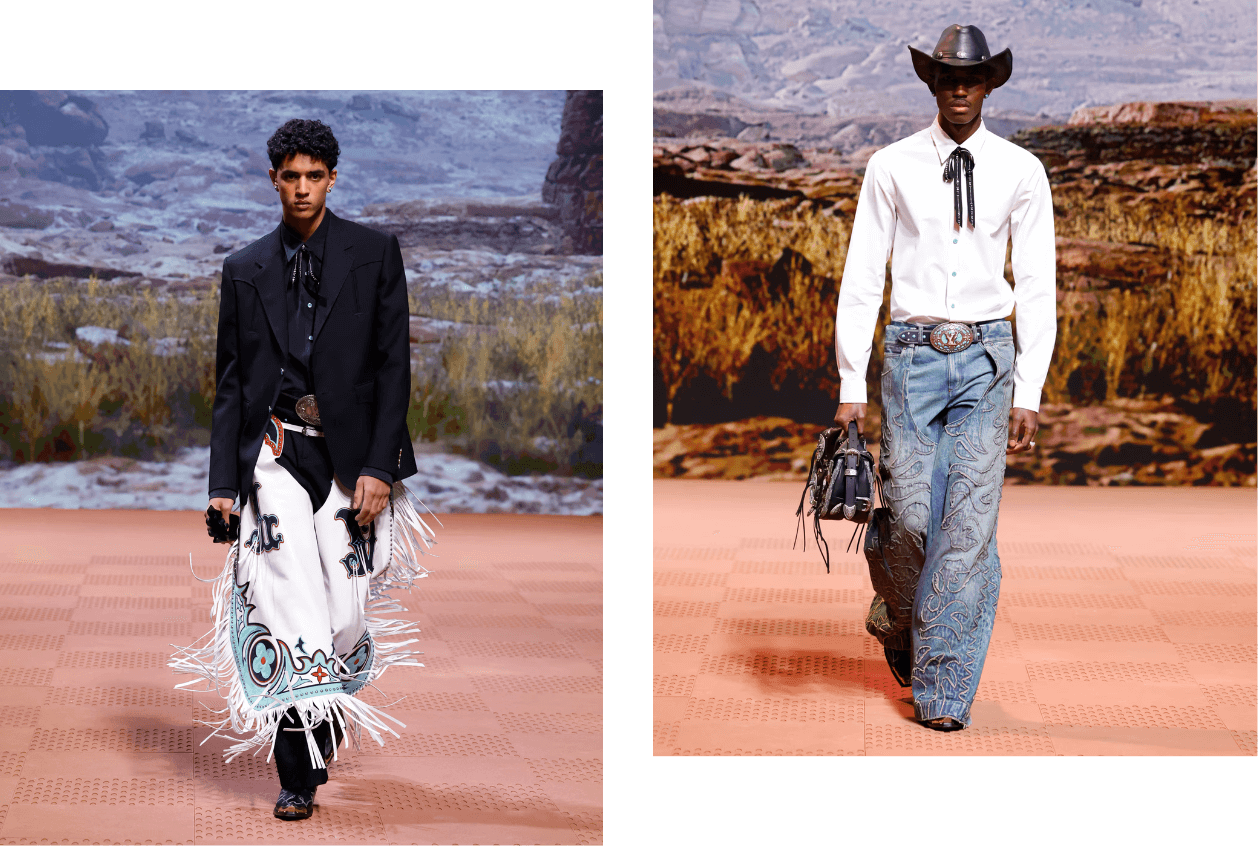
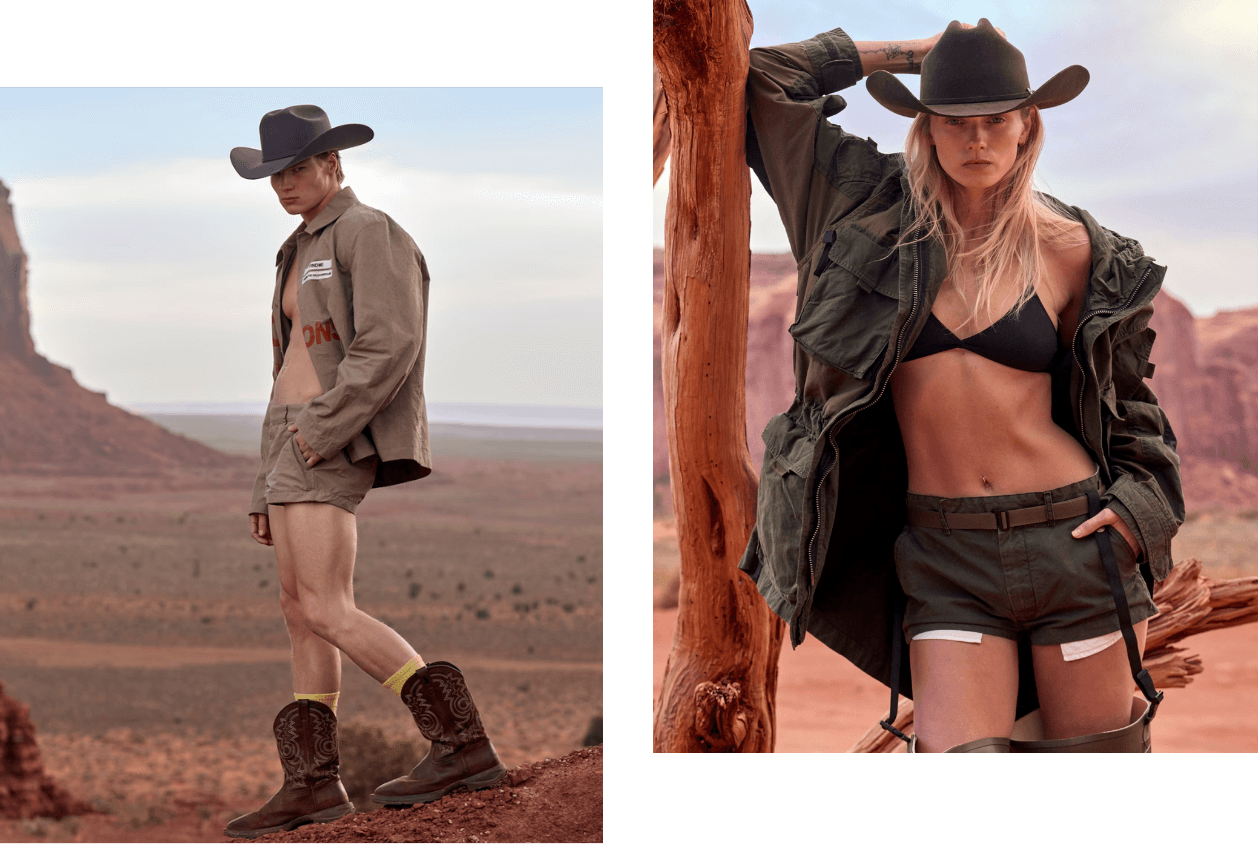

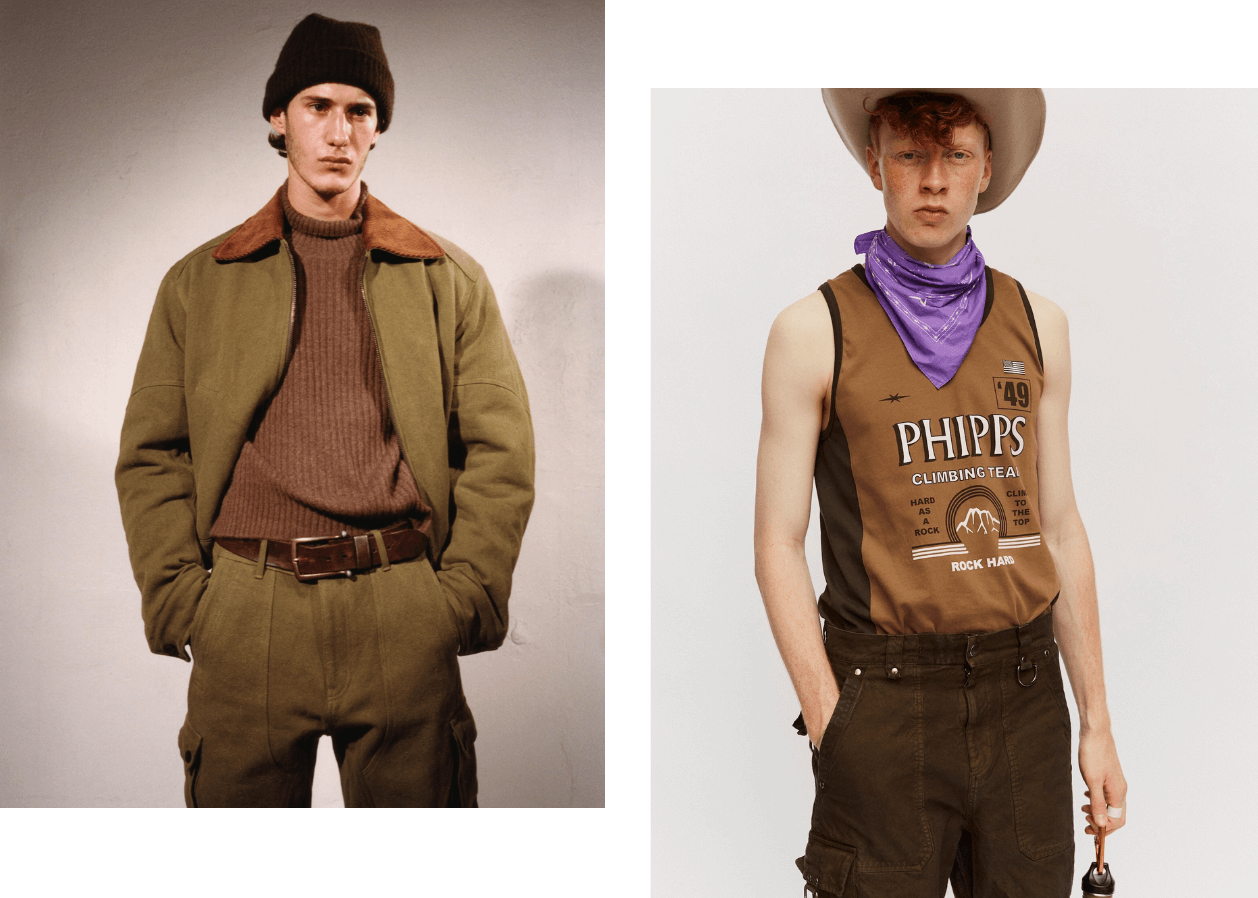
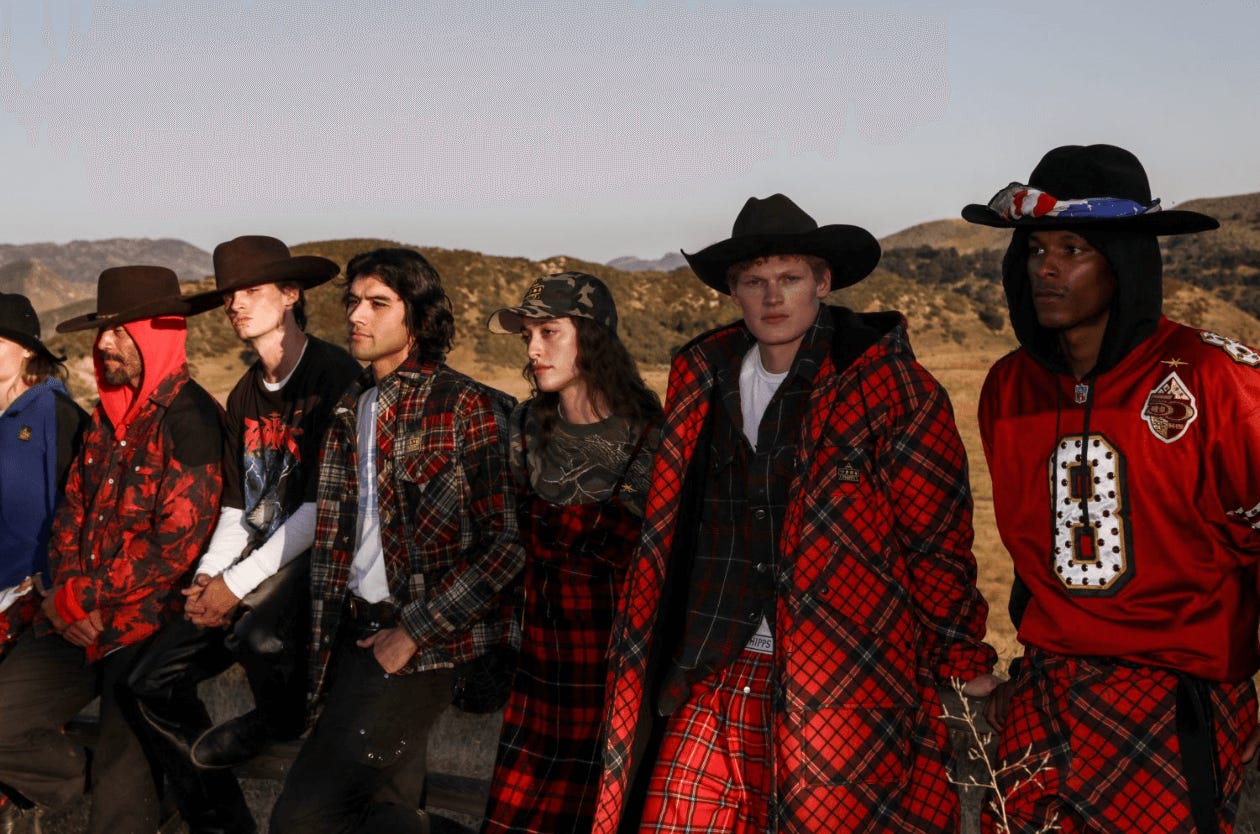
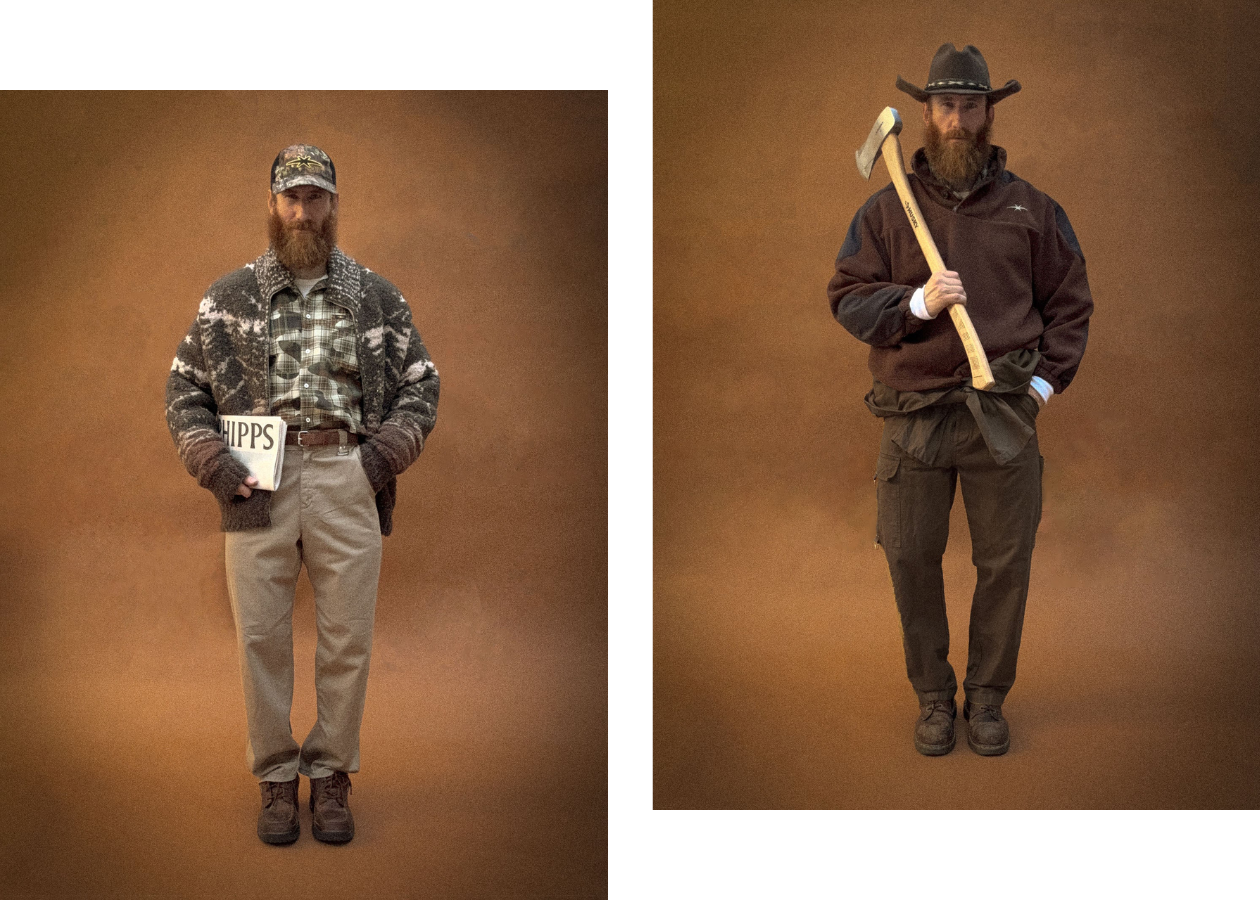
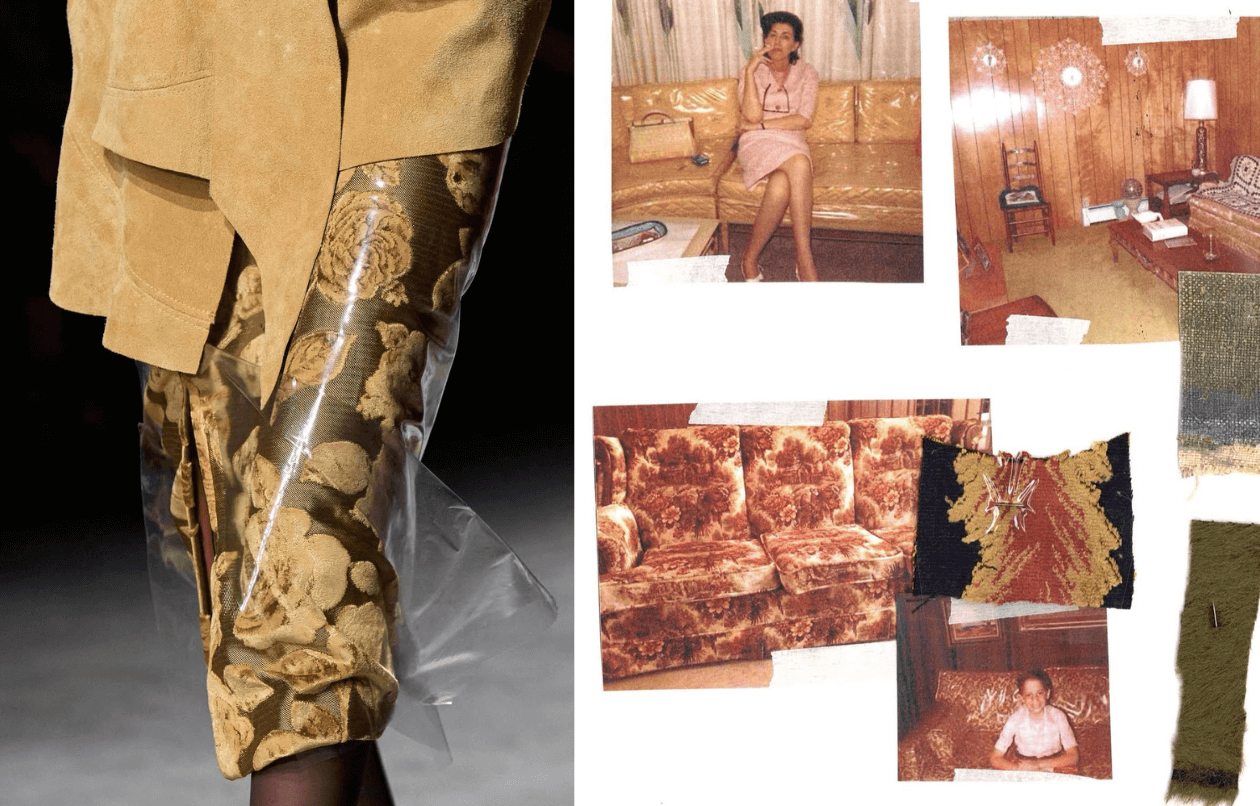
🐎🐎🐎🐎🐎
Don’t forget the Barbie of it all